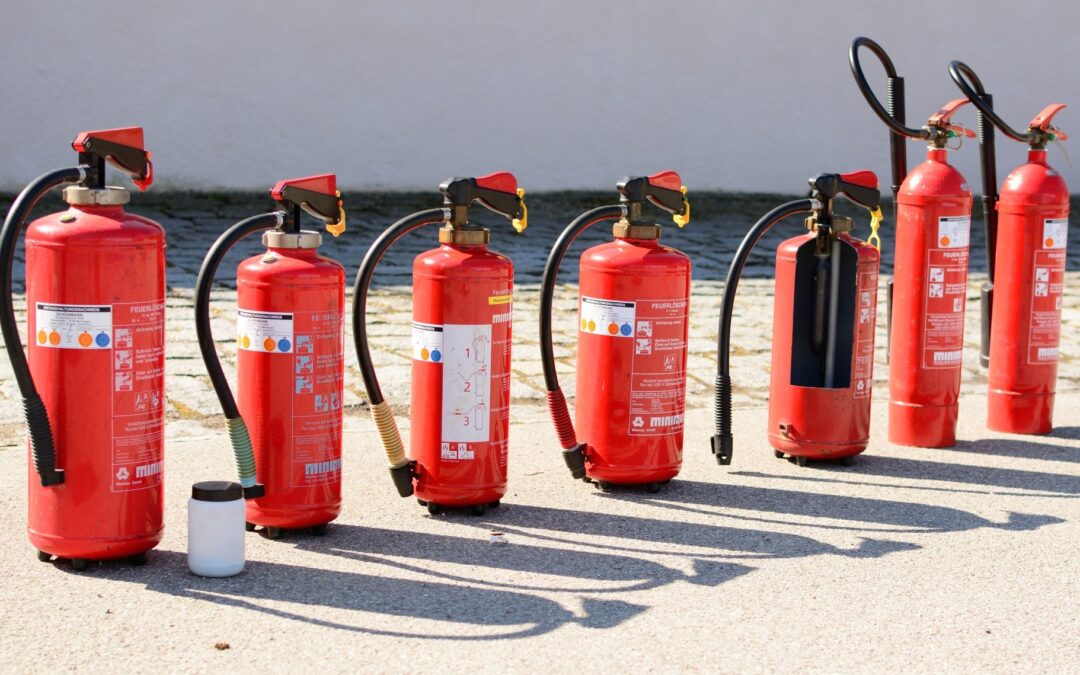On average, 358,500 homes experience a structural fire every year. Fortunately, brave men and women are dedicated to keeping our communities safe when home and commercial fires occur.
Unfortunately, toxic chemicals in fire extinguishers can lead to issues for those who bravely protect us. Per- and polyfluoroalkyl substances (PFAS) in fire extinguishers are one of these types of chemicals.
Understanding these chemicals and how they may impact is essential. You may be entitled to compensation if you’ve been exposed to PFAS in fire extinguishers. Keep reading to learn more.
What Are Per- And Polyfluoroalkyl Substances?
Per- and polyfluoroalkyl substances, commonly known as PFAS, are a group of man-made chemicals. These chemicals have been used in various industries for decades.
They’re characterized by their unique chemical structure, which includes carbon-fluorine bonds. This strong bond gives PFAS remarkable properties like heat resistance and water repellency.
What Are Per- And Polyfluoroalkyl Substances Used For?
PFAS compounds can be found in various products due to their versatility. They have been used in manufacturing processes, such as:
- Producing non-stick cookware
- Waterproof fabrics
- Stain-resistant materials
- Firefighting foam formulations
Concerns About PFAS
Concerns about PFAS started to arise when studies discovered these substances’ persistence and bioaccumulative nature. Unlike other chemicals that break down over time, PFAS do not easily degrade under normal circumstances. This means they can persist for extended periods once released into the environment or our bodies.
The potential health effects associated with exposure to PFAS have become a cause for concern among scientists and public health officials alike. Some studies suggest that prolonged exposure may lead to adverse effects on the following:
- Liver function
- Hormonal balance
- Immune system response
- Increased risk of certain types of cancer
How Do PFAS in Fire Extinguishers Impact Firefighters?
Firefighters are known for their bravery and dedication to protecting others. They face numerous risks and hazards daily, including exposure to harmful chemicals. Firefighters may come into contact with one group of chemicals: per- and polyfluoroalkyl substances (PFAS) found in fire extinguishers.
PFAS became popular in fire retardants because they create a protective barrier between the flames and the surface. Their effectiveness in suppressing fires quickly made them attractive for use in buildings, aircraft, and military installations.
However, these chemicals have been linked to various health concerns. When firefighters use PFAS-containing fire extinguishers during firefighting operations, they may become exposed to these potentially hazardous substances.
Exposure to PFAS can occur through inhalation of the chemical fumes or absorption through the skin when handling contaminated equipment or clothing. Firefighters who repeatedly come into contact with PFAS may experience adverse health effects over time.
Immune System
One concern is the impact of PFAS on firefighters’ immune systems. Research suggests that exposure to these chemicals could weaken immune function, making firefighters more susceptible to infections and diseases. This puts them at an increased risk during active firefighting and throughout their careers.
Cancer
Some studies have indicated a possible link between PFAS exposure and certain types of cancer, such as kidney and testicular cancer. While further research is required for conclusive evidence, this potential association raises significant concerns about firefighter safety.
Environmental Impact
Additionally, there is growing awareness surrounding the environmental impact of using PFAS-containing fire extinguishers. These chemicals do not break down easily in nature and can contaminate water sources if released during firefighting activities or disposal practices. This contamination poses risks not only for wildlife but also for drinking water supplies in nearby communities.
How Can a Lawyer Help?
The legal knowledge that attorneys bring to the table can be invaluable in navigating the complex world of toxic chemicals and their impact on firefighters. Here are some ways lawyers can assist in these cases.
Understanding Your Rights and Options
An experienced lawyer can help firefighters understand their rights and options. They can provide guidance on pursuing legal action against companies responsible for manufacturing or using fire retardants containing PFAS. This includes filing lawsuits seeking compensation for any health issues caused by exposure to these chemicals.
Providing Knowledge and Resources
Lawyers should have the knowledge and resources to conduct thorough investigations into the use of PFAS in fire extinguishers. They can gather evidence from the following:
- Scientific studies
- Industry documents
- Other sources
This can help to build a strong case against negligent parties. This evidence can be crucial to proving liability and establishing a link between firefighting activities and health problems related to PFAS exposure.
Advocating for You
Lawyers can advocate for firefighters who have been harmed by PFAS exposure, as they should understand the complexities of toxic tort litigation.
In addition, they know how to represent client’s interests inside and outside courtrooms. Their goal is to secure financial compensation. They may also hold responsible parties accountable for their actions.
Collaborating
Lawyers may collaborate with experts such as medical professionals or environmental scientists who specialize in studying the effects of PFAS on human health.
These experts can play a vital role in providing testimony or written reports. Reports support plaintiffs’ claims regarding the harmful effects of PFAS-containing fire extinguishers.
Negotiating
Skilled negotiators may seek settlements for affected firefighters without going through lengthy trials if it’s in their client’s best interest. However, if necessary, they will also vigorously litigate cases through trial proceedings if they do not receive satisfactory settlement offers.
Understanding the Connection Between PFAS and Firefighters in Louisiana
If you’re exposed to PFAS in fire extinguishers and, as a result, become sick, our team of attorneys is here to be your advocate.
At Talbot, Carmouche & Marcello, we’ve been fighting for people in Louisiana for over 50 years. We have experience in toxic tort cases and want to ensure you understand your rights. Schedule a free consultation today to learn about how we can help.

